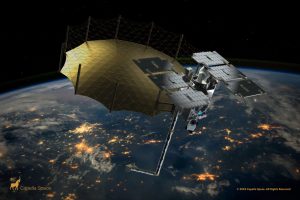 Being able to pilot an aircraft requires having confidence in the onboard technology. One type of technology that is frequently used for this purpose, and has been for many years, is the cathode ray tube (CRT) display. Pilots have depended on these displays for decades to guide them in the skies.
Being able to pilot an aircraft requires having confidence in the onboard technology. One type of technology that is frequently used for this purpose, and has been for many years, is the cathode ray tube (CRT) display. Pilots have depended on these displays for decades to guide them in the skies.
Inside the display
A CRT display essentially uses a vacuum tube to produce a concentrated electron beam. The phosphorescent screen is struck by electrons, causing it to light up and produce the images that users see. The displays carefully adjust the strength and position of the electron beam as it scans across the screen, displaying complex visual data such as weather radar images and navigational charts with accuracy.
There are several benefits that CRT displays provide and which are essential for pilots who are navigating the airspace. First and foremost, they are incredibly dependable, continuously giving optimal performance even in the demanding cockpit environment, ensuring a safe flying experience. Additionally, their resilience against deterioration over time and long-term operational efficiency are ensured by their sturdy design, especially when properly maintained and upgraded.
Last, but not least, they offer clarity and contrast that one may not find with other display options. This gives pilots sharp, high-contrast visuals even in challenging lighting conditions, improving situational awareness and greatly facilitating navigation. All of these characteristics combine to make CRT display technology an essential tool for pilots, enabling accuracy during flight operations.
Planning the CRT route
Older aircraft used CRT screens for fundamental flight metrics, primarily to provide airspeed and altitude data. Up until the early 1970s individuals relied solely on CRTs for basic information. Since then, advances in miniaturisation and ICs have made it possible to create increasingly complex displays. Nowadays, multi-functional displays (MFDs), which are also powered by CRT technology, are a result of these continuous technological advancements. Today’s MFDs provide a greater variety of essential data thanks to the decades of CRT technology behind them

CRTs allow pilots to view instrument panels in different light conditions
By giving pilots a visual depiction of their flight path and the surrounding environment, navigation charts greatly improve navigation accuracy. In order to make informed decisions and maintain the safety of the flight, pilots must be able to recognise and avoid potential hazards when faced with unstable weather conditions made possible by the weather radar images displayed on these screens.
Pilots may also closely monitor and adjust engine performance during the flight to maximise efficiency and reliability thanks to real-time engine performance data that can be shown on CRT panels. When combined, these features give pilots the knowledge they need to fly safely and confidently, even under difficult circumstances.
Technology limitations
Although CRT display technology has long been an essential component of aviation, it is not without its drawbacks. The comparatively large and weighty nature of CRT screens in comparison to more modern display technologies such as LED and liquid crystal displays (LCDs) is a major disadvantage. Given that weight and space are limited in current aircraft designs, this could present difficulties. The CRT display also uses more power than its contenders, having an effect on overall energy efficiency.

The cockpit control panel needs to display readable data in night-time conditions
The sensitivity of CRT displays can cause problems such as image burn-in and screen flickering when not properly maintained or replaced. These occurrences can deteriorate image quality and, eventually, the legibility of important flight information. In addition, the manufacturing of CRT displays has declined dramatically in recent years, making it increasingly difficult to get replacement parts and keep systems operating in older aircraft.
Even with these limitations, CRT display technology is still employed in aircraft applications because of its special benefits, which exceed the disadvantages. Nonetheless, the aviation industry is increasingly relying on more sophisticated display technologies that provide better performance, efficiency and dependability as technology continues to advance.
Long-standing legacy
Despite the more modern and advanced display technologies such as LCDs and LEDs, CRTs remain essential. Their exceptional readability guarantees that pilots always have a clear view of important information, especially in situations where glare and brightness present difficulties. CRT displays continuously provide excellent visibility, facilitating decision-making during flights, in contrast to LCDs, which may have trouble in strong sunlight.
The cost-effectiveness of maintaining CRT systems cannot be understated, especially for older aircraft. In some cases, the expense of replacing CRT displays with newer models may outweigh the benefits in several applications from simple instrument displays to complex MFDs.
 Electronics Weekly Electronics Design & Components Tech News
Electronics Weekly Electronics Design & Components Tech News



